The blackberry is one of the oldest medicinal plants. Several thousand species are distributed worldwide. As a garden plant, it is popular because of its aromatic fruits.
Occurrence and cultivation of the blackberry

The half to three meter high blackberry bush occurs in parts of Europe, North Africa, the Middle East and North America. More than 2000 species are already known in Europe, of which more than 300 occur in Germany. The blackberry blooms from May to August and mostly has white, rarely pink flowers. The fruits ripen between August and October.
From a botanical point of view, however, the blackberry is not a berry, but a composite stone fruit. The ripe fruit can be recognized by its blue-black color, to which it ripens from green to red. The blackberry prefers sunny to partially shaded places and often grows in light forests or on the edge of the forest.
Effect & application
The blackberry contains tannins such as gallotannins and ellagitannins, as well as flavonoids, fruit acids and fiber. The minerals contain potassium, calcium, iron, phosphorus and magnesium. It is also rich in vitamins and, in addition to vitamin C, contains various B vitamins, provitamin A and vitamin E. The blackberry has an astringent effect due to the tannins it contains. The tannins bind certain proteins in the body.
This forms a protective layer over wounds, which is beneficial for healing. In addition, the plant has a blood-purifying and hemostatic effect, diuretic, expectorant and tonic. The contained flavonoids can bind copper. The leaves of the blackberry without petioles can be used as tea or tincture, as can the fruit or the juice of the fruit. The fruits are suitable for fresh consumption, but should not be kept for longer than one or two days.
Instead, they can be frozen and used at a later date. As the fresh fruits lose too much flavor and juice when they are washed, they should only be dabbed gently. Ready-made teas are available in stores. Alternatively, one to two teaspoons of blackberry leaves can be poured over with a cup of boiling water. For this purpose, leaves from the young shoots of the shrub should be picked between May and September. Those who find it too time-consuming to collect the leaves can also buy them at the pharmacy.
The leaves can be used fresh or dried. By drying, the leaves can be stored and used for tea at any time. After ten minutes of steeping, the tea is strained. It can be drunk hot or cold in small sips and tastes pleasantly aromatic. One to three cups a day are recommended. To make a tincture, the leaves of the plant are doused with alcohol or some other alcohol.
In addition to the leaves, the berries can also be added. After several weeks, the liquid is filtered off and stored in dark bottles. Also, ready-made tinctures are available in stores. Blackberry juice can be purchased or made by pressing the fruit yourself. The juice is drunk cold or slightly warmed or used for gargling. In addition to internal use, the brew or tincture made from the plant is also suitable for external washing. The blackberry is also available as a homeopathic remedy.
Importance for health, treatment & prevention
The blackberry is one of the oldest medicinal plants and has been used for various ailments since ancient times. A brew made from blackberry leaves is used to rinse sore spots or inflammations in the mouth and throat. The medicinal plant can be used to gargle with tonsillitis, cough or hoarseness.
It also provides relief for chronic skin diseases. Due to the tannins it contains, the blackberry is a good remedy for diarrheal diseases, although a doctor should be consulted if the diarrhea lasts for a long time. The dietary fiber it contains supports good digestion as a preventive measure. Due to the flavonoids and vitamins it contains, especially the high levels of vitamin C, the blackberry protects and strengthens the immune system.
It can be taken both acutely and as a preventive measure against colds. It also strengthens the connective tissue and the vascular walls, helps with nervous restlessness and against urinary congestion. It has an expectorant, sweat-inducing effect and can be used in the event of a slight fever. Chewing dried blackberry leaves helps relieve heartburn.
Since the blackberries protect the body from free radicals, they are said to have a positive effect against various cancers. For a tea with blackberry, different medicinal plants can be mixed and, for example, chamomile flowers and peppermint can be added, which creates a good mixture for stomach problems.
Blackberry tea can be drunk daily as a preventive measure. Since the blackberry contains no fat and only small amounts of protein and carbohydrates and also has a satiating effect, it is suitable as a food in the context of diets. Side effects of the blackberry are not known, but due to its oxalic acid content it should be used with caution in the case of metabolic diseases, kidney or gallstones. When collecting the berries in the wild, contamination with the fox tapeworm should be considered. Berries and leaves close to the ground should therefore not be used or heated beforehand.

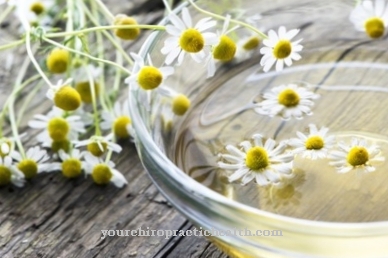
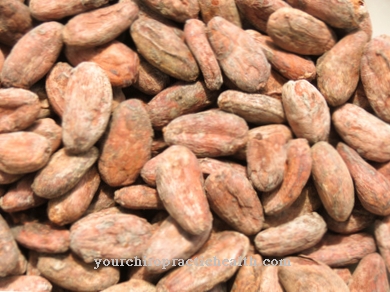
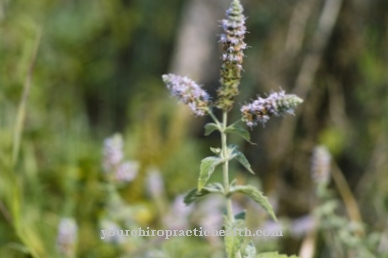
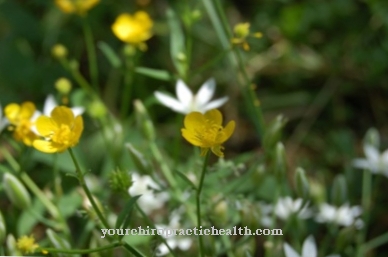
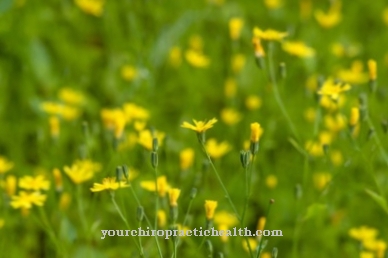







.jpg)

.jpg)
.jpg)











.jpg)